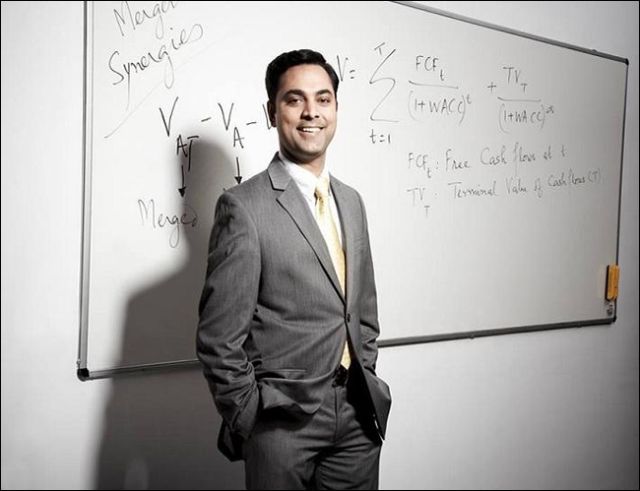
by Editor | May 25, 2021 | Interviews

Krishnamurthy Subramanian
By Vishav and Manish Gupta,
New Delhi : Chief Economic Adviser Krishnamurthy Subramanian is not worried about the upward revision of fiscal deficit target for 2019-20 to 3.4 per cent as he believes it will actually come down to 3.1 per cent after the revised GDP numbers are incorporated.
He adds that even based on the previous Gross Domestic Product (GDP) data, the government had missed the target this year by a mere 0.02 per cent which translates to a few thousand crores of rupees.
Subramanian also expresses satisfaction with the efforts taken by the government towards fiscal consolidation and said the country remained fiscally disciplined despite greater devolution of 42 per cent to states and implementation of the Seventh Pay Commission.
“The budgeted estimate for fiscal deficit (for FY19) was 3.34 per cent. The actual number has come to be 3.36 per cent. And as is the practice, it is rounded off to 3.4 per cent. So, actual slippage is 0.02 per cent which is just a few thousand crores,” the Chief Economic Adviser to the Finance Ministry told IANS in a post-budget interview.
He added the 3.36 per cent figure was derived based on the old GDP estimates and had not used the revised estimates which were released last Thursday.
The government had revised the GDP growth rates by 110 basis points from 7.1 per cent to 8.2 per cent for 2016-17 and by 50 basis points from 6.7 per cent to 7.2 per cent for fiscal 2017-18.
“If you use the revised GDP growth rate, we have calculated that the base would be Rs 225 lakh crore for the next year, which will bring down your fiscal deficit to 3.1 per cent,” he stated.
However, the CEA added, “We have to first study those numbers before using them.”
Subramanian said fiscal prudence had been followed “very well” by the government and expressed confidence of continuing on the glide path to reduce fiscal deficit down to 3 per cent by 2021 as per the Fiscal Responsibility and Budget Management (FRBM) Act.
“It is important to keep in mind that the fiscal deficit figures that we have are despite greater devolution of 42 per cent to states and despite the implementation of the Seventh Pay Commission.
“Historically, whenever pay commission recommendations have been implemented, the fiscal deficit number sees a huge jump. But that hasn’t happened. The government is committed to fiscal prudence and I have no worries on that front,” he said.
As for the tax changes brought about in the Interim Budget, which reduced tax liability to zero for income up to Rs 5 lakh, the economist said there was a need to encourage consumption and the government did exactly that by putting higher disposable income in the hands of citizens.
“Given the kind of headwinds that we are facing, especially on globalisation front, it’s very critical for us to build robust buying power in the domestic economy. Therefore, putting disposable income in the hands of the middle class is (important) considering 60 per cent of our growth is consumption-based,” he said.
He said when the consumption goes up, it should have a growth effect as well.
On the debate on lack of jobs in the economy, Subramanian said it was more a problem on the demand side rather than supply front.
“Jobs are outcome of both demand and supply. We keep asking questions on the supply side — are we creating enough jobs? The demand side is actually having people who have ability to take up those jobs.
“It’s done through skilling, which, by its very nature, doesn’t happen overnight. It takes time. That’s where Skill India campaign and investments will start showing their results,” he said.
(Vishav and Manish can be contacted at 1.vishv@gmail.com and manish.g@ians.in respectively.)
—IANS
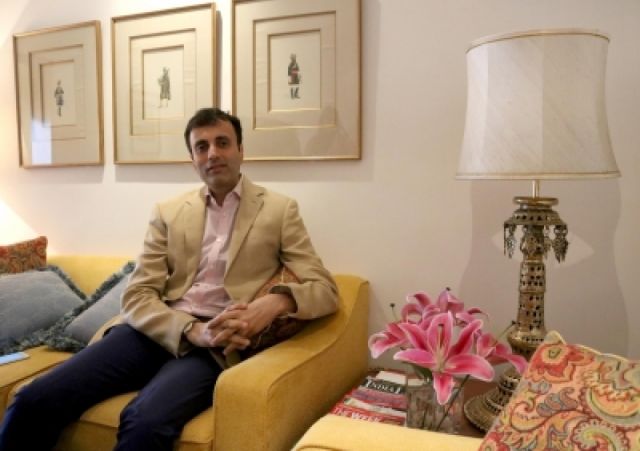
by Editor | May 25, 2021 | Interviews, Politics

Ruchir Sharma
By Saket Suman,
New Delhi : The popularity graph of Prime Minister Narendra Modi has fallen drastically and what seemed a year ago as another wrestling match “with only one boxer in the ring” now seems a Lok Sabha election too close to call, says global investor and bestselling author Ruchir Sharma.
Sharma, who has been chasing election campaigns in India for over two decades and has just written “Democracy on the Road”, says that this change reflects the strength of Indian democracy and is particularly significant at a time when obituaries calling the death of democracy rule the roost in many parts of the world.
This neck and neck fight at a time when there is so much despair about democracy in the world, Sharma said, shows how deeply rooted India’s democratic set up is.
He said that Modi had begun eyeing the Prime Minister’s post long before 2014 and following him closely during the election campaigns, Sharma could make out as early as 2012 what his real ambition was. On the other hand, Congress President Rahul Gabdhi was a very different person, immature, not interested in listening, and with not-so-good campaigning skills.
Cut to the present, Sharma said, Rahul Gandhi has changed, he is much more sensitive, he seems to listen and engage more.
“He seems like a full-time politician now, even his campaigning skills have changed, he implies shout-and-call technique a lot more like Modi. There has been a significant change in him,” Sharma told IANS in an interview.
But what really is going to stop Modi?
Sharma said that there is a gap between what prevails in popular media and the actual mood of the voters in the hinterland. He said the 2019 elections will be a true parliamentary election where regional leaders, instead of the prime ministerial candidate(s), will sway the votes.
“India is just not cut for a presidential election. There was a Modi wave in 2014 but even then it was restricted to the north and parts of the West but BJP’s vote share was still only 31 per cent. The mood of the voters will vary from state to state as to what alliances are stitched up,” he added.
He said that Priyanka Gandhi’s entry is too late to make an appeal in Eastern UP.
Describing her as a “charismatic leader” on the ground, Sharma maintained that her plunge is too late because of the caste blocks in Eastern UP. He, however, said that the greatest difference she can make is if she stands as “the combined Opposition candidate from Varanasi against Modi”.
She has to do something as big as that because then the energy will be focussed in one big constituency that will have a larger impact, he said.
According to Sharma, the biggest difference between the 2014 and the 2019 general elections will be that in 2014 the BJP was “far too ahead in the social media game” whereas now the other parties have caught up too and “the gap has narrowed”.
He said that in a country as diverse and heterogeneous as India, it is very difficult for one leader to dominate a nationwide election.
There is hardly any discussion about Rahul Gandhi or Modi in Tamil Nadu, it’s always about the regional leaders. That’s how our country is, it will not be easy for one centrist person to dominate the elections, he said.
(Saket Suman can be contacted at saket.s@ians.in)
—IANS
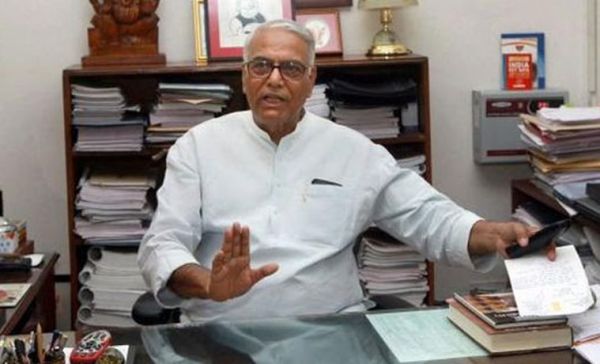
by Editor | May 25, 2021 | Interviews, Politics

Yashwant Sinha
By Anand Singh and Prashant Sood,
New Delhi : Former Union Minister Yashwant Sinha says opposition unity against the BJP in the coming Lok Sabha elections is a “work in progress” but feels that the Samajwadi Party and Bahujan Samaj Party should have included Congress in the alliance in Uttar Pradesh that would have “finished the game”.
He also feels even if the concept of one common candidate against the Bharatiya Janata Party has not emerged so far “closer to elections” it may materialise. Even if there is no grand alliance at the national level, there will be state-specific alliances to corner the BJP, says a confident Sinha.
“Yes, the BSP and SP should have accommodated the Congress. That would have finished the game,” he told IANS in an interview about the alliance in Uttar Pradesh, which sends 80 MPs to Lok Sabha.
Sinha, who resigned from the BJP last year and has floated the Rashtra Manch, a non-party platform, said his advice to opposition parties was that they should come together and form strong alliances and have a common minimum programme at the national level.
He said there was no need to go into the “Modi versus who” question being raised by the BJP before the elections and named Mamata Banerjee, Mayawati, Sharad Pawar, H.D. Deve Gowda and Rahul Gandhi as among leaders with qualities to be Prime Minister.
Sinha, 81, expressed hope that if a “mahagatbandhan” (grand alliance) was not created at the national level, there will be effective state-level alliances to take on the BJP.
He said the idea of putting up a common opposition candidate against the BJP has not materialised.
“Perhaps it is not looking like materialising so far, but I am sure closer to elections something may happen,” he said, adding added that efforts were being made in that direction.
Asked about the opposition parties not coming together to form a grand alliance in several states, Sinha said: “it is not easy for disparate elements to come together and these parties are individual separate parties because they are different.
“So it is not easy for them to come together. Some attempts are being made but necessity is the mother of the invention,” he said, adding that in states such as Jharkhand, Karanataka, Maharashtra and Tamil Nadu, opposition parties have come together.
“So there are many states where they have come together. There will be issues because they will have to agree not only on the number of seats but specifically which seat but I am hopeful even if this so-called Mahagatbandhan at the national level is not created there will be effective state level alliances to take on the BJP.”
The former Minister said there were some settled principles on the basis of which seat distribution can decided if everyone is liberal and fair about it.
Answering a query on the index of opposition unity, the former Finance and External Affairs Minister said it was work in progress. “Opposition unity is work in progress.”
On a common CMP of opposition, he said efforts are being made in the direction.
He said opposition parties have understood the importance of social media and Modi will not have an advantage in his campaign.
Answering a query on Priyanka Gandhi entering active politics, he said it will have an impact on the voters in Uttar Pradesh as well as nationally and it will help the Congress.
Asked about the opposition candidate against Prime Minister Narendra Modi in the upcoming elections, he said it is a very idle question that the BJP is persuading people to ask because it suits them.
“The counter to the BJP is who was the Chief Minister candidate of BJP in Uttar Pradesh, Haryana, Maharashtra, Jharkhand when state elections were held there. And who have been the BJP’s prime ministerial candidate earlier.
“Who have been the BJP prime ministerial candidates earlier. The first time the BJP said that Mr Vajpayee will be the prime ministerial candidate was in 1995 before 1996 elections when Advaniji announced it. Who was the prime ministerial candidate in 1977 when the Janata Party scored such a massive victory?” he asked.
He said there was no declared prime ministerial candidate when Congress stitched an alliance with other parties to form the UPA government in 2004.
“So, therefore, when you look at our political history you will find the parties have anointed somebody only when it suited. Otherwise, they have gone without a so-called commander-in- chief, without a projected leader. More recently the BJP also has been doing it.”
He said it suits the BJP and they were asking everyone to ask this question and were even making fun as BJP chief Amit Shah has done by asking who will be the prime minister (of opposition) on Monday and who will be on Tuesday.
He said the candidate has eventually emerged as was the case in 1996.
Sinha said when Narendra Modi was projected as the prime ministerial candidate, he was chief minister of Gujarat.
“Now we have many chief ministers in opposition ranks. We have many former chief ministers. We have many chief ministers who also have been central ministers. We have central ministers who have occupied important positions. Therefore, anyone can fill the bill.”
Asked if can be Mamata Banerjee or Mayawati, he added more names.
“Mamata, Mayawati, Sharad Pawar, (H. D.) Deve Gowda, Rahul Gandhi,” he said, adding that though Gandhi does not have administrative experience his party was doing well now.
Asked if he had endorsed West Bengal Chief Minister Mamata Banerjee earlier, Sinha said he had not endorsed her.
“I barely said that she has the qualities to be a prime minister. One has to be be very careful or else media twist it. Who does not have the qualities, several people have qualities. That is why I am telling you what was Modi before, he was just chief minister of a state.”
Sinha said he had talked about Mamata Banerjee because a question was posed to him. “No one asked about others.”
To a further question about Mayawati, he said: “I have named all these people who can fill the bill.”
Asked about his assessment of how Rahul Gandhi has come up, he said he has come up very well.
“The way he was made fun of, he has proved them wrong. I think Modi and Amit Shah who wanted a Congress-Mukt Bharat and were talking about it, that has completely vanished from the discussion now.”
Sinha said he will not contest elections.
“As of now, no,” he said, adding that he had decided not to take part in electoral politics before the 2014 Lok Sabha polls.
The former Finance Minister said he did not have problem with the BJP of Vajpayee and Advani but he had issues with the style of working of Modi and party President Amit Shah.
Sinha said ruled out his going back to the BJP but said “it will be a better party without them (Modi and Shah)”.
He said the most important issue against the government was that it has destroyed all the institutions in this country. “The federal structure has been badly hit under this government.”
He named agrarian distress, unemployment, issues concerning Dalits and crimes against women as other issues that the opposition would highlight.
He said considering the country’s diverse political landscape, a federal party concept “is an interesting concept which should be explored”.
He said such a front can have alliances with national parties such as Congress and CPI-M.
Asked if he will play a role in the formation of such a party, Sinha said he can play a role up to a limit. “Your effort depends on your accommodation space that everyone else is prepared to give you.”
Sinha said he will try definitely to bring opposition parties together.
“I will try definitely to make it as reasonable as possible for everyone. I am prepared to give whatever assistance whatever anybody wants. And it will depend on them now.”
(Anand Singh can be reached at anand.s@ians.in and Prashant Sood at prashant.s@ians.in)
(This story is an intellectual property of IANS)
—IANS
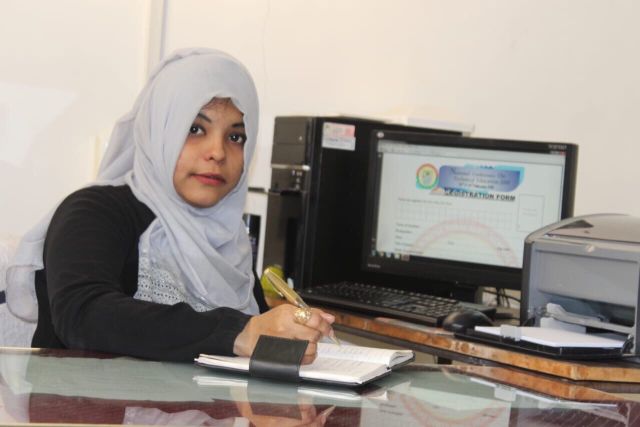
by Editor | May 25, 2021 | Entrepreneurship, Interviews, Women Entrepreneur

Dr. Munnazza Afreen
Dr. Munnazza Afreen (PhD. M.A., M.Ed., MBA in Edu Mgt.) She has been teaching/mentoring young minds for a decade. She was conferred PhD degree from University of Mumbai in 2017. She has received best paper award in 2015 international Business & Education conference held in London. She has published research based papers in national and international journals. Her area of research was enhancement of English language communication skills. She has keen interest in training and development. She has trained students in soft skills. She is a prolific reader and has travelled to England, Australia, and UAE. She has co-author a book titled “An Introduction to Education” which was published by USA based publication house.
What is the conference all about?
National Conference on Technology is first of its kind conference to be held to promote the innovation, entrepreneurship, and awareness especially amongst female students and rural students at MMANTC, Mansoora Malegaon on 23rd & 24th Feb 2019. The conference aims to bring together researchers, scientists, industry experts, academicians and policy makers to promote STEM, and specially promote & encourage women’s participation in STEM.
Can you brief MMANTC?
MMANTC stands for Maulana Mukhtar Ahmed Nadvi Technical Campus (MMANTC). Maulana Mukhtar Ahmad Nadvi Technical Campus (MMANTC) is located at the outskirts of Malegaon, the textile township of northern Maharashtra. The college offers Degree and Diploma courses in Mechanical, Civil, Electrical and Electronics and Telecommunication Engineering since 2012.
The Technical Campus has been a dream project of the Society’s President, Maulana Arshad Mukhtar, a great visionary, philanthropist, industrialist, educationist, and a worthy son of a worthy father, Maulana Mukhtar Ahmad Nadvi, who founded Jamia Mohammediya Education Society (JMES) in the year 1978. JMES has twelve institutions running in various parts of the country. Maulana Mukhtar Ahmad Nadvi strongly believed that only through education would the people of India, gain the vision of the future while preserving their timeless cultural values. Maulana Arshad Mukhtar, having taken the mantle from him in the year 2007, has been painting the canvas with such elegance that Jamia Mohammediya Education Society is now a name in the country to reckon with.
What are the highlights of the conference?
As one of the aims of the conference is to promote women’s participation in STEM, we have invited Ainul Attar Madam who is Former, Deputy Director DTE, Former, Joint Secretary of Minority Development Department, Government of Maharashtra, Ex-Executive council member od I.S.T.E., New Delhi. She will be the great source of inspiration for rural girl students. At the same time we have requested Dr. Tausif Malik Sahab who is Treasurer, Democrats Abroad India (Democratic Party USA’s International chapter), Founder MAHAbfic.com (Maharashtra Blockchain Fintech ICO Crypto currency) Pune, GCCStartup.News, All India Muslim Business Startup Network (AIMBSN), IndiaStartupFest.com, Muslim Spelling Bee, USA, Chicago to join us as Chief Guest at our event. I am sure he will give our attendees a unique perspective towards technology. He is a legend in his field. Students will surely be benefited with his presence. To complete the list of jewels we also have dignitaries -Prof. (Dr.) N. B. Pasalkar Sahab, Dr. A. K. Kureshi, Dr. Neha Dand, Shahzed Lehry and Altaf Pirjade.
What is the focus of the conference?
Conference specifically focuses on publication with our publication partner IOSR Journal, JMES Startup Showcase, JMES Hackathon, networking, branding and most importantly campus recruitment of college students.
Any Message would you like to convey to the readers ?
Yes, of course! All the readers are requested to contact us for Sponsorship, Media Partnership, JMES Hackathon, JMES Startups Showcase, Strategic Partnerships and Recruitment & Internship opportunities. They can contact me via Email facultydevelopment.jmes@gmail.com. Thank you
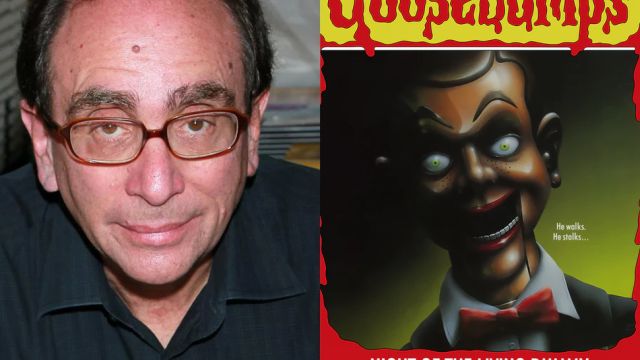
by Editor | May 25, 2021 | Interviews

‘Goosebumps’ author R.L. Stine
By Sugandha Rawal,
New Delhi : R.L. Stine never imagined he’d carve out a successful future for himself by writing a horror book series, which he started by accident. The “Goosebumps” creator says he is proud of spreading chills and thrills among children, and helping youngsters develop a reading habit.
“I’m very proud of the millions of kids I have scared over the years, and proud that millions of kids were encouraged to read because of my books,” Stine told IANS in an email interview.
Born as Robert Lawrence Stine, he started writing when he was 9 and has been penning down his creative thoughts since then. Back in the early 1990s, he resisted the idea of writing “Goosebumps”, which is now one of the best-selling children’s series of all-time, because he already had “Fear Street”, a horror book series for adults, to his credit.
Stine only agreed to go for it with the right name and zeroed in on “Goosebumps”, in which he merged the world of horror with humour. The first edition of “Goosebumps”, which brings supernatural beings to life to haunt children, came out in 1992.
“I never dreamed that these books would be so popular. And I never imagined the ‘Goosebumps’ series would last 26 years. What I’ve learned is that kids really like to be scared! (As long as there is a happy ending),” said Stine, who is also referred to as Stephen King of Children’s Literature.
It has been a long road for the franchise. Since 1992, the “Goosebumps” franchise has expanded its universe. The adventurous world came to life on the big screen with two feature films — “Goosebumps”, which was aired in India on &flix, and “Goosebumps 2”, which will premiere on the channel later this year.
Apart from films, “Goosebumps” series were adapted into a television series, six video games and six comic books.
What do you think makes the franchise timeless?
“I don’t know if they are timeless or not. But I do know that our fears never change. Fear of the dark… Fear of strange places… Fear of being pursued by someone or something… Those fears seem to be timeless,” said the 75-year-old.
Talking about his influences, Stine said: “I’m still influenced by the comic books I read as a kid. By authors such as Ray Bradbury, Isaac Asimov and Rod Serling. Your heroes and influences stay with you.”
He asserted that he works really hard at “keeping up with kids and what interests them”.
“All of my books start with real-world settings and events — and then the plot goes crazy,” said the author, adding that “some of my early readers are 30 or 35 years old. To them, I am nostalgia! That took some getting used to”.
In the “Goosebumps” film franchise, actor Jack Black essays role of Stine. But what about a film on your life?
He was quick to dismiss the idea by saying, “My life story would be someone sitting in a room and typing every day, year after year. Who would want to see a movie like that?”
Back to the book franchise, Stine, who is also a television producer, editor and screenwriter, feels there are still many untold stories from the “Goosebumps” universe.
“I just signed on for six more ‘Goosebumps’ books. That should keep me busy. I’m also writing a series of graphic novels for kids. Fun.”
(Sugandha Rawal can be contacted at sugandha.r@ians.in)
—IANS





